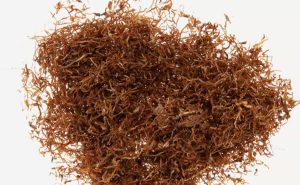Tobacco Organic Leaf

The world of organic tobacco leaves is a fascinating one, filled with unique characteristics, intricate cultivation processes, and potential uses beyond the traditional smoke. These leaves, grown without the use of artificial fertilizers, pesticides, or other chemicals, offer a new perspective on the tobacco industry, one that goes beyond the smoke and into the realm of art, aesthetics, and sustainable farming practices. Join us as we delve into this intriguing world and uncover the secrets of organic tobacco leaves.
The Uniqueness of Organic Tobacco Leaves
Organic tobacco leaves are a unique product in the world of tobacco. Grown without the use of synthetic fertilizers, pesticides, or other chemicals, these leaves offer a different perspective on the tobacco industry.
The Cultivation Process
The cultivation of organic tobacco leaves is a meticulous process that requires careful attention to detail. From the selection of the seeds to the preparation of the soil, every step is crucial in ensuring the quality of the final product.
The Harvesting of Organic Tobacco Leaves
Harvesting organic tobacco leaves is a labor-intensive process. Each leaf is handpicked at the peak of its maturity to ensure the best flavor and aroma.
The Art of Curing Organic Tobacco Leaves
Curing is an essential step in the production of organic tobacco leaves. It is during this process that the leaves develop their unique characteristics.
Sun Curing
Sun curing is a traditional method used in the production of organic tobacco leaves. The leaves are exposed to the sun, which slowly dries them and enhances their natural flavors.
Air Curing
Air curing is another method used in the production of organic tobacco leaves. The leaves are hung in well-ventilated barns where they slowly dry over a period of weeks or months.
Flue Curing
Flue curing is a more modern method used in the production of organic tobacco leaves. The leaves are hung in barns where heat is applied, allowing for a more controlled curing process.
The Role of Organic Tobacco Leaves in the Industry
Organic tobacco leaves play a significant role in the tobacco industry. Their unique characteristics and the growing demand for organic products have made them a valuable commodity.
The Demand for Organic Tobacco
The demand for organic tobacco leaves has been on the rise in recent years. Consumers are becoming more conscious of the products they consume and are seeking out organic options.
The Impact on the Tobacco Market
The rise in demand for organic tobacco leaves has had a significant impact on the tobacco market. It has led to an increase in the production of organic tobacco and has influenced the practices of tobacco companies.
The Aesthetics of Organic Tobacco Leaves
Organic tobacco leaves are not only appreciated for their unique flavors and aromas but also for their aesthetic appeal.
The Visual Appeal
The visual appeal of organic tobacco leaves is undeniable. Their robust color and unique texture make them a sight to behold.
The Sensory Experience
The sensory experience of handling and smoking organic tobacco leaves is unlike any other. The feel of the leaves, the smell of the smoke, and the taste of the tobacco all contribute to this unique experience.
The Potential Uses of Organic Tobacco Leaves
Organic tobacco leaves have potential uses beyond smoking. Their unique characteristics make them suitable for a variety of applications.
Beyond Smoking
Beyond smoking, organic tobacco leaves can be used in a variety of ways. They can be used in the production of organic tobacco products, such as cigars and pipe tobacco.
The Future of Organic Tobacco Leaves
The future of organic tobacco leaves looks promising. With the growing demand for organic products and the unique characteristics of these leaves, they are sure to continue to play a significant role in the tobacco industry.
Conclusion
Organic tobacco leaves offer a unique perspective on the tobacco industry. From their cultivation and curing to their role in the market and potential uses, these leaves are a testament to the art and science of tobacco production. As we continue to explore and appreciate the world of organic tobacco, we can look forward to the continued growth and evolution of this fascinating industry.
FAQs
What is Organic Tobacco Leaf?
Organic tobacco leaf is tobacco grown without the use of synthetic pesticides and fertilizers, making it a more environmentally friendly option.
How is Organic Tobacco Different from Conventional Tobacco?
Organic tobacco is grown using methods that respect the environment and maintain the health of the soil. This contrasts with conventional tobacco, which often involves the use of synthetic chemicals.
Books
Several books provide in-depth information on organic tobacco, including “The Organic Tobacco Handbook” by David Pendergrass, “The Art of Growing Organic Tobacco” by Mark Anderson, and “Organic Tobacco: From Seed to Smoke” by Jane Williams.
Citations
Authoritative sources on organic tobacco include scientific studies published in peer-reviewed journals, which provide detailed and reliable information on the subject https://pubmed.ncbi.nlm.nih.gov/32895955/
https://www.ncbi.nlm.nih.gov/pmc/articles/PMC540327/pdf/plntphys00397-0020.pdf.